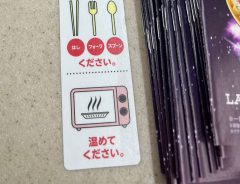- Tags:
- convenience / Lawson / logistics / returns / SMARI
Related Article
-

Watch an Escalator in Japan Transform into a Wheelchair Lift
-

Japanese convenience store lives up to name with wonderful help for the hearing-impaired
-

Japan’s favorite convenience store fried chicken nuggets get a delicious garlic butter upgrade
-

“Re:Zero” x Lawson Collaboration Will Make September a Month to Rem-ember
-

Bad Designs Reveal That Japan Isn’t Always The Land of Efficiency
-

Enjoy the flavor of tasty PABLO cheese tarts … in a drink!



I'm probably not alone in appreciating the benefits of online shopping, especially since the novel coronavirus pandemic made it potentially more dangerous to visit crowded stores.
When it comes to shopping for clothes, however, there are times when you just don't get the size right. This is aggravated by the fact that sizes can vary by brand and not all brands provide handy size charts.
Of course, what that entails is returning your purchase.
Whether it's clothing or anything else you might need to return, until recently, I assumed that the only way to do this was to either schedule a pick-up or visit the closest convenience store. Many Japanese convenience stores function as pick-up spots for door-to-door delivery services. You need to fill out a shipping label by hand, which is a hassle, especially if Japanese isn't your native language.
I personally don't like sending packages this way. The clerk will ask you to fill out the shipping label on the side so they can continue handling other people in line, but it still takes longer than scanning a product purchase, even more so when you have questions about service and delivery times, etc. When the store is crowded, knowing that people are waiting in line behind you and probably getting impatient is annoying.
But recently, I've learned about a more convenient way to return packages: SMARI.
Using SMARI
Earlier this year, I made a purchase with a shopping site I'd never used before and I needed to return it. They sent me a QR code and told me to use something called SMARI, which I had never heard of before.
I quickly realized that this was the name of the new "box" that had popped up inside my neighborhood Lawson (a major Japanese convenience store chain).
It was so easy to use. After scanning the QR code from my smartphone's screen, a label sticker came out. All I had to do was slap it on the package and put the package inside the SMARI unit.
At first, I wondered how my package would fit inside, but the unit has a very large door, so it was no problem.
A receipt came out, and that was it. The whole thing only took a minute or so. Everything was very easy to understand. Even if I didn't speak Japanese, it would have been simple enough to figure out. Moreover, the shopping site I used provided instructions in English on how to use SMARI when it provided the QR code, so language isn't an issue.
No need to bring any other information, no need to manually fill out a shipping label, no need to worry about maintaining social distance, or impatient shoppers behind you in line. It's fast, efficient and easy to use.
Other merits
SMARI also has other merits that customers don't notice. For one thing, it's more ecologically friendly than existing return options. SMARI takes advantage of the cargo space available in delivery trucks after they have made their deliveries to Lawson stores and are on their way back to the distribution centers. By using the same logistics network, there's no need for separate truck trips, which reduces the carbon footprint. Moreover, since there's no need for additional personnel, it allows Lawson to operate more efficiently and reduce the burden on its employees.
The number of shopping and rental services using SMARI continues to grow. If you live in Japan, chances are you'll have an opportunity to use it too!